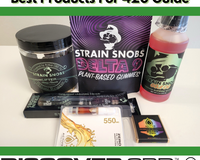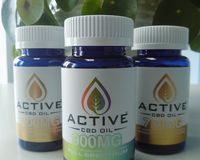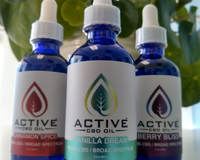We’re more than just CBD! I’m so excited to be sharing information with you about two of my favorite cannabinoids. I’ve been using hemp and marijuana products for years, but delta-8-THC and delta-10-THC quickly became two of my favorites after trying them. Let’s compare delta 10 vs delta 8 THC!
Delta 10 vs Delta 8: Breaking Down the Basics
Okay, let’s talk about cannabis. Did you know that hemp and marijuana are the same kind of plant? They are both Cannabis sativa L., and the only difference is the THC content! Hemp plants contain 0.3% or less THC and marijuana plants contain more than 0.3% THC. Cannabis plants have been found to contain over 100 different cannabinoids, such as THC, CBD, CBG, and CBN.
Do you want to know something cool? There are even different forms of THC found in hemp. Typically when you hear someone talking about THC, or tetrahydrocannabinol, delta-9-THC is what they’re referring to. Two that are talked about a little less frequently are delta-8-THC and delta-10-THC. These forms of THC exist within cannabis in trace amounts. Let’s break them down in the next section!
Delta 8 vs 10: Molecular Structure
Delta-8-THC and delta-10-THC are considered to be different isomers of THC. The National Cancer Institute, or NCI, defines an isomer as “one of two or more compounds that have the same chemical formula but different arrangements of the atoms within the molecules.” What this means is that the chemical formula for delta-8, delta-9, and delta-10 are all the same (C21H30O2), as they all contain the same “pieces,” but that the “pieces” are in a different order in each isomer.
Each of these THC forms contains twenty-one carbon atoms, thirty hydrogen atoms, and two oxygen atoms. The location of the double bond, where two pairs of electrons are shared between two atoms, is the difference between the three THC isomers we’re covering today.
Take a look at the structural formulas shown below. The red sections are the double bonds along the carbon chain in each isomer that is different. In delta-8 the double bond is located between carbon atoms 8 and 9. In delta-9, it’s between carbon atoms 9 and 10. Delta-10’s double bond exists between carbon atoms 10 and 10a.
We previously published a blog looking more in depth on the molecular difference between the different forms of THC called What is with these THC Numbers? if you’d like a more in depth look at the chemistry aspect!

Delta-10 vs Delta-8: Isomerization
Because they exist within such small amounts in hemp, many producers of delta-8 and delta-10 THC products have found that the most effective way to create these products is through the isomerization of CBD. This involves taking hemp derived cannabidiol and using an acid to catalyze it, neutralizing or removing the acid and solvent, purifying the final product, and testing the final product for purity. There are some safety concerns surrounding purifying the final product, as unwanted byproducts could potentially be dangerous.
Here at Discover CBD, all of our products are third party lab tested with results being published to our website so that you can access the lab reports yourself and see what all is in your product. This kind of transparency is one of the things I appreciate about the company I work for.
Delta-10 vs Delta 8: Within the Endocannabinoid System
So now we know that the technical difference between delta-8 and delta-10 is the location of the double bond on the carbon chain. But how does that affect anything? Well, every human body has what’s called an endocannabinoid system.
Your body’s endocannabinoid system is made up of endogenous cannabinoids, cannabinoid receptors, and metabolic enzymes. This system is responsible for maintaining homeostasis throughout your body. Endogenous cannabinoids, or endocannabinoids, are cannabinoids produced within the body. Endocannabinoids interact with the different cannabinoid receptors throughout your body, the CB1 and CB2 receptors. THC binds to the CB1 receptors, which is what causes the feeling of being “high.”
Now imagine that CB1 receptors are “locks” and THC is the “key.” Delta-8-THC and delta-10-THC are both keys that have the same shape but a few notches on the “key” are slightly different. This changes the way that the “key” interacts with the “lock.” Though the “key” fits inside the “lock,” the efficiency with which it activates the CB1 receptor is changed, so each THC isomer has its own unique effect on the endocannabinoid system.
Delta 10 vs Delta-8: The Experience
Published research and studies on isomers of THC and other cannabinoids within hemp are not nearly as common as those on delta-9-THC and CBD. While there have been a handful of studies done, a lot of what we know about these two cannabinoids comes from anecdotal evidence. Anecdotal evidence is when a person shares their own personal experience, and is not necessarily representative of typical experiences. We have people sharing anecdotes with us about their delta-8 and delta-10 experiences constantly!
When comparing delta 8 THC vs delta 10 in general, many people find delta-8 to produce mild effects and delta-10 to be even milder. Delta-8 is often described as having more of a bodily effect, whereas delta-10 is described as having more of a mental effect. It’s important to note that both cannabinoids do cause intoxication and will show up on drug tests. Let’s look at delta 10 THC vs delta 8 THC a little closer in the next sections!
Delta-8 vs Delta-10: Let’s Talk About Delta-8
Delta-8 has been shown to have many potential health benefits! Many users report using delta-8-THC for pain relief, treating inflammation, reducing stress, and combating a low appetite.
Two researchers, one from the University at Buffalo and one from the University of Michigan, conducted a study where volunteers from the United States who have used delta-8-THC filled out an online survey about their experiences with the isomer. The 521 participants reported the most prominent effects to be relaxation, pain relief, and euphoria. Cognitive distortions were described as being moderate, with examples such as a distorted sense of time, short-term memory issues, and trouble concentrating. Anxiety and paranoia were reported at low levels. When compared to delta-9-THC, researchers found that most people reported delta-8 being less intense and having a shorter duration.
Answers to open-ended questions resulted in additional findings. Many people found that delta-8 provides similar benefits to delta-9 with “fewer drawbacks/side effects.” Some found that it reduced pain, increased relaxation, soothed anxiety, and relieved symptoms of PTSD. One participant even referred to delta-8 as more of a “functional” high.
A Strong Antiemetic
One of the most promising studies that used delta-8-THC showed us that the cannabinoid has much potential as an antiemetic, which is used to prevent or relieve nausea and vomiting. They gave measured doses of delta-8-THC ingestible oil to eight children (3 to 13 years old) taking chemotherapy drugs for various blood cancers two hours before treatments and continued every six hours for 24 hours. This was done for up to 8 months with a total of 480 treatments. In this study, no vomiting occurred and side effects were considered negligible. This is a big deal because not only are nausea and vomiting common side effects of chemotherapy drugs, but cells in the digestive tract are some of the cells most likely to be damaged by chemotherapy.

Delta 8 vs Delta-10: Let’s Talk About Delta-10
Delta-10 has been shown to have its own potential benefits as well! Many users find this cannabinoid to cause a euphoric high with uplifting effects. We often hear from people who use delta-10-THC to increase creativity and improve their mood. Personally I enjoy using my delta-10 vape while I’m drawing and painting, or even while I’m out hiking! I find it to be mentally stimulating without the anxiety and paranoia that high potency delta-9-THC tends to leave me with. The psychoactive effect from this compound tends to fade quicker than the other THC isomers, and many users combine delta-8 and 10 to create a more balanced experience.
A Call for Further Research
There hasn’t been any substantial research done on the effects of delta-10-THC. When searching PubMed for delta-10-THC, the most relevant result is an article calling for further human toxicological data to be collected on isomer byproducts and chemical degradation for the health and safety of the public. More research is welcome and needed throughout the entire cannabis industry to further understand both the short- and long-term effects of different cannabinoids on physical and mental health in humans, as well as their potential therapeutic uses.

Delta 10 vs 8: Different Ways to Take Them!
Due to the popularity of delta-8, we have quite an assortment of products to choose from! We have options available for inhalation and ingestion, as well as sublingual and topical use.
Inhalation of delta-8 and delta-10 has been shown to be the fastest acting method of consumption. People typically find that our vape cartridges, dabs, or infused hemp flower take effect almost immediately and wear off moderately quickly as well. We tend to see people using our vape cartridges for things like anxiety and pain where the quick activation can make all the difference to some people.

Topical products also tend to have a faster activation time, with most people seeing results within about 15 minutes. We offer a delta-8 salve that contains 500 mg of delta-8-THC and 100 mg of CBD. The added CBD is to further increase what is commonly called the “entourage effect,” or the idea that the components of the hemp plant work in synergy together.
I’ve heard some people say that they experience pain relief with the delta-8 salve as well as a slight warming effect. I personally enjoy the salve because of the olive oil and shea butter base that made a world of difference for my dry skin this winter! Being a topical that doesn’t enter your bloodstream, salves typically do not produce intoxicating effects.

On the topic of pain relief, we also offer delta-8 oils. Most people find that using the oils produces less of the high effect than vaping but still provides them with the relief they’re looking for, so these are often being used during the daytime or by people not wanting to feel too much of delta-8’s psychoactive properties.
These products are taken sublingually, which means that you place the desired amount of oil under your tongue and hold it for a minute or two before swallowing. This gives the delta-8 time to absorb through the tiny blood vessels under your tongue and results in an activation time of around 15 to 30 minutes, and lasts between four and six hours for most people. People like this option due to the faster activation without having to inhale any smoke or vapor.
We also have an oil that is a 16:1 delta-8 to delta-9 combination, which comprises 800 mg of delta-8 and 50 mg of delta-9. This is to promote what research suggests is the entourage effect, the theory that the more components of the cannabis plant that you have working together, the stronger beneficial effects you may feel.

Edibles are a popular option as well! Many people find that edibles produce a stronger body high than other options, which has consumers turning to them for things like pain and help with sleep. They take a bit longer to take effect than other options, as it usually takes 30 to 90 minutes to feel the full effects. Edibles tend to last longer than other consumption methods as well, with most people feeling the effects anywhere from four to eight hours. We currently offer delta-8-THC gummies.

Delta 8 vs Delta 10 THC: Legal Status
I know what you’re thinking. “Well, if delta-8-THC and delta-10-THC are both THC, surely I’m unable to purchase them in my state where marijuana is illegal.” I have some exciting news for you! In 2018 the United States government passed what has come to be known as the 2018 Agriculture Improvement Act.
Prior to this change in legislation, the legal definition of marijuana included all parts of the plant Cannabis sativa L. The definition of marijuana now excludes hemp, which is currently defined as “the plant Cannabis sativa L. and any part of that plant, including the seeds thereof and all derivatives, extracts, cannabinoids, isomers, acids, salts, and salts of isomers, whether growing or not, with a delta-9 tetrahydrocannabinol concentration of not more than 0.3 percent on a dry weight basis.”
Transporting industrial hemp and hemp derived CBD and other cannabinoids is federally legal and states are not able to prohibit the transportation of lawfully produced hemp products across state lines, though they can prohibit the growing of hemp. This is why we’ve seen the CBD industry explode in recent years.
Remember how I mentioned that delta-8-THC and delta-10-THC are isomers of THC that exist in trace amounts within the hemp plant? They fall within the legal definition of hemp isomers and that’s why we’re able to produce and distribute them. This also means that delta-8 and delta-10 products may be accessible in some areas where delta-9-THC and recreational cannabis are not available.
That being said, some state laws have established restrictions regarding the production or possession of products containing isomers of THC. It’s always best to check your local laws before purchasing or ordering delta-8 or delta-10 products.

The Conclusion
We’re more than just CBD! Although still relatively new compared to delta-9-THC, people are turning to delta-8 and 10 for a variety of different reasons. If these seem like something you’re interested in, why not give us a call? You can reach us at 1-844-GO-CBD-NOW (462-2366) and we’ll be happy to place your order and answer any questions you may have. If phone calls aren’t your thing, come see us or chat with us online!


























